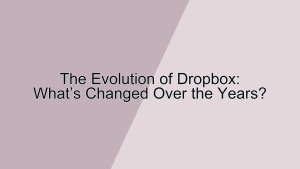Music streaming has revolutionized how we listen to our favorite tracks, offering vast libraries of songs at our fingertips. Two of the most prominent players in this arena are Spotify and Apple Music. While both services provide extensive music collections and innovative features, they cater to different user preferences and needs. This article will compare Spotify and Apple Music across several key aspects to help you determine which platform is superior for your music streaming experience.
1. Music Library and Content
The size and variety of a music library are crucial factors in any music streaming service. Both Spotify and Apple Music boast extensive catalogs, but there are differences worth noting.
- Spotify’s Music Library: Spotify offers an impressive catalog of over 70 million songs, encompassing a wide range of genres, artists, and new releases. For instance, an indie music fan might appreciate Spotify’s extensive collection of lesser-known tracks and emerging artists. Additionally, Spotify provides a variety of exclusive content, such as podcast series and live sessions, which enhances the overall user experience. The platform’s focus on discovering new music through features like Discover Weekly and Release Radar helps users explore and expand their musical horizons. This vast and diverse library makes Spotify a go-to choice for users who enjoy exploring different types of music.
- Apple Music’s Music Library: Apple Music also boasts an extensive library, with over 75 million songs available for streaming. The platform offers a wide array of genres and artists, including exclusive releases and curated playlists. For example, a fan of classical music might find Apple Music’s curated playlists and exclusive recordings particularly appealing. Apple Music integrates seamlessly with the iTunes library, allowing users to access and stream their purchased music alongside the streaming catalog. This integration creates a unified music experience, blending streaming and owned music. The extensive library and exclusive content make Apple Music a strong contender for users who seek a comprehensive and curated music experience.
2. User Interface and Experience
The user interface (UI) and overall user experience (UX) are essential for any music streaming service, impacting how easily users can navigate and enjoy their music.
- Spotify’s User Interface: Spotify features a sleek, intuitive interface that is easy to navigate. The home screen presents personalized playlists, new releases, and recommendations based on listening habits. For example, a user who frequently listens to rock might see a mix of classic rock playlists and new rock releases on their home screen. The platform’s dark theme is visually appealing and reduces eye strain during prolonged usage. The desktop and mobile apps maintain a consistent design, ensuring a seamless experience across devices. Additionally, Spotify’s playlist creation and management features are straightforward, allowing users to organize their music effortlessly. This user-friendly interface makes Spotify a favorite among users who prioritize ease of use and personalized recommendations.
- Apple Music’s User Interface: Apple Music offers a clean, modern interface that integrates seamlessly with iOS and other Apple devices. The home screen, or Listen Now tab, provides personalized recommendations, recently played music, and curated playlists. For instance, a user who enjoys pop music might see a selection of popular playlists and new releases in the Listen Now tab. The platform’s light theme is visually pleasing and aligns with the overall design language of Apple products. Apple Music also includes a Library tab where users can easily access their playlists, albums, and downloaded music. This intuitive and visually appealing interface makes Apple Music an excellent choice for users embedded in the Apple ecosystem.
3. Music Discovery and Recommendations
Discovering new music is a crucial aspect of any music streaming service. Both Spotify and Apple Music offer robust music discovery and recommendation features, but they take different approaches.
- Spotify’s Music Discovery: Spotify excels in music discovery, using sophisticated algorithms to provide personalized recommendations. The Discover Weekly playlist, updated every Monday, offers a curated selection of tracks based on the user’s listening history. For example, a jazz enthusiast might find a mix of classic and contemporary jazz tracks in their Discover Weekly playlist. Spotify also offers the Release Radar playlist, featuring new releases from artists the user follows or might like. Additionally, the Daily Mix playlists group similar tracks into various genres, providing a fresh listening experience. These personalized playlists and recommendation features make Spotify a powerful tool for discovering new music tailored to individual tastes.
- Apple Music’s Music Discovery: Apple Music combines human curation with algorithmic recommendations to provide a personalized music discovery experience. The For You tab offers curated playlists, albums, and tracks based on the user’s listening habits. For instance, a user who frequently listens to hip-hop might see a mix of popular hip-hop tracks and curated playlists in the For You tab. Apple Music also includes New Music Mix and Favorites Mix playlists, updated weekly with new releases and favorite tracks, respectively. The platform’s curated playlists, created by music experts, offer an additional layer of discovery. These features, combined with human curation, make Apple Music a compelling option for users who appreciate personalized recommendations and expertly curated content.
4. Audio Quality and Streaming Performance
Audio quality and streaming performance are vital considerations for any music streaming service, affecting the overall listening experience.
- Spotify’s Audio Quality: Spotify offers several audio quality settings, catering to different user preferences and data usage needs. The platform’s highest setting, Very High, streams at 320 kbps, providing a high-quality listening experience. For example, an audiophile might choose the Very High setting to enjoy crisp, clear sound on their high-end headphones. Spotify’s adaptive streaming feature adjusts the audio quality based on the user’s internet connection, ensuring smooth playback even on slower networks. The platform’s Spotify Connect feature allows users to stream music seamlessly to compatible devices, enhancing the overall listening experience. These audio quality options and streaming features make Spotify a reliable choice for users who value high-quality audio and seamless performance.
- Apple Music’s Audio Quality: Apple Music offers high-quality audio streaming, with tracks available in 256 kbps AAC format. Additionally, the platform supports Lossless Audio and Spatial Audio with Dolby Atmos, providing an immersive listening experience. For instance, a user with a high-end audio setup might appreciate the enhanced clarity and depth offered by Lossless Audio. Apple Music’s adaptive streaming feature adjusts the audio quality based on the user’s internet connection, ensuring consistent playback. The platform’s seamless integration with Apple devices, such as HomePod and AirPods, enhances the overall audio experience. These high-quality audio options and seamless integration make Apple Music an excellent choice for users who prioritize superior sound quality and immersive listening experiences.
5. Pricing and Subscription Options
The cost and flexibility of subscription plans are important factors when choosing a music streaming service. Let’s compare the pricing models of Spotify and Apple Music.
- Spotify’s Pricing: Spotify offers a range of subscription plans to cater to different user needs. The free tier, supported by ads, allows users to access the music library with some limitations, such as shuffle-only play on mobile devices. For example, a casual listener might find the free tier sufficient for occasional music streaming. Spotify Premium starts at $9.99 per month, offering ad-free listening, offline downloads, and higher audio quality. Family and student plans are also available, providing discounts for multiple users or students. Spotify’s tiered pricing structure allows users to choose a plan that best fits their budget and listening habits.
- Apple Music’s Pricing: Apple Music offers a straightforward pricing model, with an individual plan priced at $9.99 per month. The platform also provides a family plan for $14.99 per month, allowing up to six members to share a subscription. For instance, a family might find the family plan cost-effective for accessing Apple Music across multiple devices. Apple Music also offers a student plan at $4.99 per month, providing a discounted rate for verified students. Additionally, Apple Music includes a free trial period, allowing users to explore the service before committing to a subscription. The simple and flexible pricing options make Apple Music accessible and cost-effective for various user groups.
Conclusion
Choosing between Spotify and Apple Music ultimately depends on your specific needs and preferences. Spotify excels in music discovery, personalized recommendations, and a user-friendly interface, making it ideal for users who enjoy exploring new music and seamless navigation. On the other hand, Apple Music offers a comprehensive music library, high-quality audio options, and seamless integration with Apple devices, making it perfect for users embedded in the Apple ecosystem.
Consider your listening habits, the features you prioritize, and your budget when making your decision. Both Spotify and Apple Music offer valuable tools to enjoy and discover music, ensuring you can have a rich and immersive music streaming experience.












